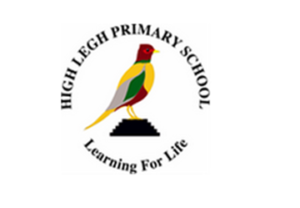After experiencing a number of issues with their previous cursive based handwriting scheme, High Legh Primary School have now decided to make the switch to a new handwriting scheme, with the help of our workbooks and expert handwriting advice and knowledge.
Continuous cursive with the entry/lead in stroke is a method of handwriting which has a flick into the letter from the baseline and a flick out from the letter. It is a style of handwriting that a number of primary schools have decided to adopt and those who have adopted the method have done so because it had been suggested that it was beneficial. Some schools and teachers feel that the continuous cursive method saves time by removing the need to teach a second stage of movement patterns at a later date, therefore saving them time. However, this couldn’t be further from the truth. The continuous cursive method does not have reliable evidence to support the suggestions that it is beneficial and often, teachers who use this method, find that they are having to spend time correcting issues that the continuous cursive method has created at a later date.
The High Legh Primary School originally opted for the continuous cursive handwriting method, after they spoke to local schools who were also using the same method and handwriting scheme. However, after they carried out some detailed research, the school found their students struggling to write letters with the flicks in and kicks out that the continuous cursive teaches. They also found that their students were getting confused, as the letters they were being taught to write in looked different to the letters in their reading books.
This research also showed that the school’s left handed students were finding the continuous cursive handwriting style very hard to master and on top of this, the school had received a lot of concern from parents, who felt that the continuous cursive method was not supporting their child’s handwriting.
These issues are what led to the High Legh Primary School seeking a more effective handwriting scheme, which had sufficient evidence to support its effectiveness. We attended the school in November, to carry out a presentation to inform the school’s staff on the merits of our handwriting scheme and it was after our presentation, that the High Legh Primary School decided that they wanted to adopt our scheme.
The school have stated that the reasoning for choosing our scheme is that they feel it is “proven to quickly raise handwriting standards”, that it “supports children with poor handwriting” and that our scheme also “targets specific handwriting problems”.
Both we at Morrells Handwriting and the school are both excited to see the difference that our handwriting scheme will have on the students’ handwriting.
We would like to mention that the issues that the High Legh Primary School experienced whilst teaching with the continuous cursive method are not uncommon. I have visited many schools to carry out my handwriting workshops and to present about the simplistic joined style I use, and almost all of the schools I have visited who are using the continuous cursive, have voiced concerns about very similar issues they are experiencing.
If you are a school or parent who is experiencing issues with your current handwriting scheme, we would be delighted to provide your school with our expert handwriting advice, or to attend your school to carry out one of our handwriting workshops or presentations. Don’t hesitate to get in touch with us today.


